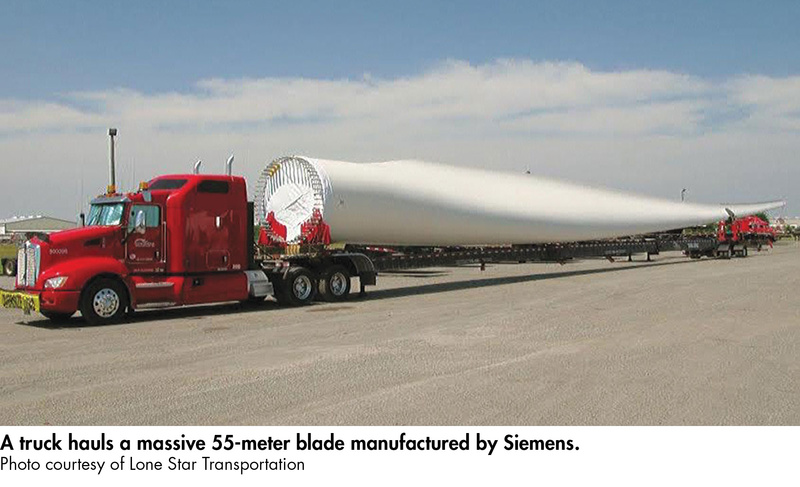What New in the Windfair World - Logistics impact bottom line and wind energy deployment
There are now more than 45,000 wind turbines in operation in the U.S., and the installed capacity continues to grow quickly. The wind energy industry is, however, experiencing logistical issues that impact the bottom line and wind energy deployment.
Although policy uncertainty continues to plague the renewable energy industry, overcoming transportation issues are a tangible way to help bolster wind energy growth by lowering costs and reducing delays.
Wind turbine components are constantly increasing in size:
– more than quadrupling over the last 30 years, modern wind turbines now produce 15 times more energy than typical turbines from 1990. The blade diameter of current models can be greater than the length of a football field. Offshore wind turbines tend to be larger than onshore turbines, with 5 megawatts of nameplate capacity.
In the case of wind turbines, bigger is better from a financial, energy production and sustainability standpoint. A recent study found that the energy to produce, transport, maintain and dispose of larger turbines isn’t that much more than a smaller turbine, but the energy production is much greater. The trend towards larger components isn’t likely to change, so the challenge is catering to it.

The shortage of skilled drivers is slowly becoming a limiting factor:
- Massive turbine blades, nacelles and generators need to be transported from ports or manufacturing facilities to the wind farm construction site. With cargo running in the millions, extensive experience in hauling large loads is vital. The shortage of qualified drivers is not isolated to the wind energy industry, but it’s a shortage that impacts the transportation industry and therefore many other industries.
“As the current crop of drivers grows older, there are fewer people choosing the profession,” states a recent article in North American Windpower. The average age of heavy cargo drivers in 2004 was 50, according to Professional Logistics Group. With long hours and extensive time away from home, trucking companies are having trouble attracting qualified drivers to fill this void.
Manufacturing for the wind energy industry has been shifting to the U.S.:
- partly due to transportation challenges of increased component size. To improve competitiveness, it is ideal for production to be as close as possible to the point of delivery. In 2011, 67 percent of wind energy components for projects were sourced domestically, from over 550 facilities.
Overweight, oversized loads create unique logical issues, which may vary by state. An example of a little difference may be that a different color of flag may be required from one state to the next. Permitting requirements are not national, and efficient transportation is hindered by varying permitting rules for these large loads, boosting both the time and the cost of transportation. Streamlining the permitting process for interstate travel would help keep costs down and reduce delays, so it is being encouraged by the American Wind Energy Association.
If you would like to receive our Newsletter or find out more about what w3.windfair.net has to offer, please, do not hesitate to contact Trevor Sievert at ts@windfair.net.
w3.windfair.net is the largest international B2B internet platform in wind energy – ultimately designed for connecting wind energy enthusiasts and companies across the globe.
- Source:
- Online Editorial
- Author:
- Edited by Trevor Sievert, Online Editorial Journalist / By S. Lozanova / Photo by Lone Star Transportation
- Email:
- ts@windfair.net
- Link:
- w3.windfair.net/...
